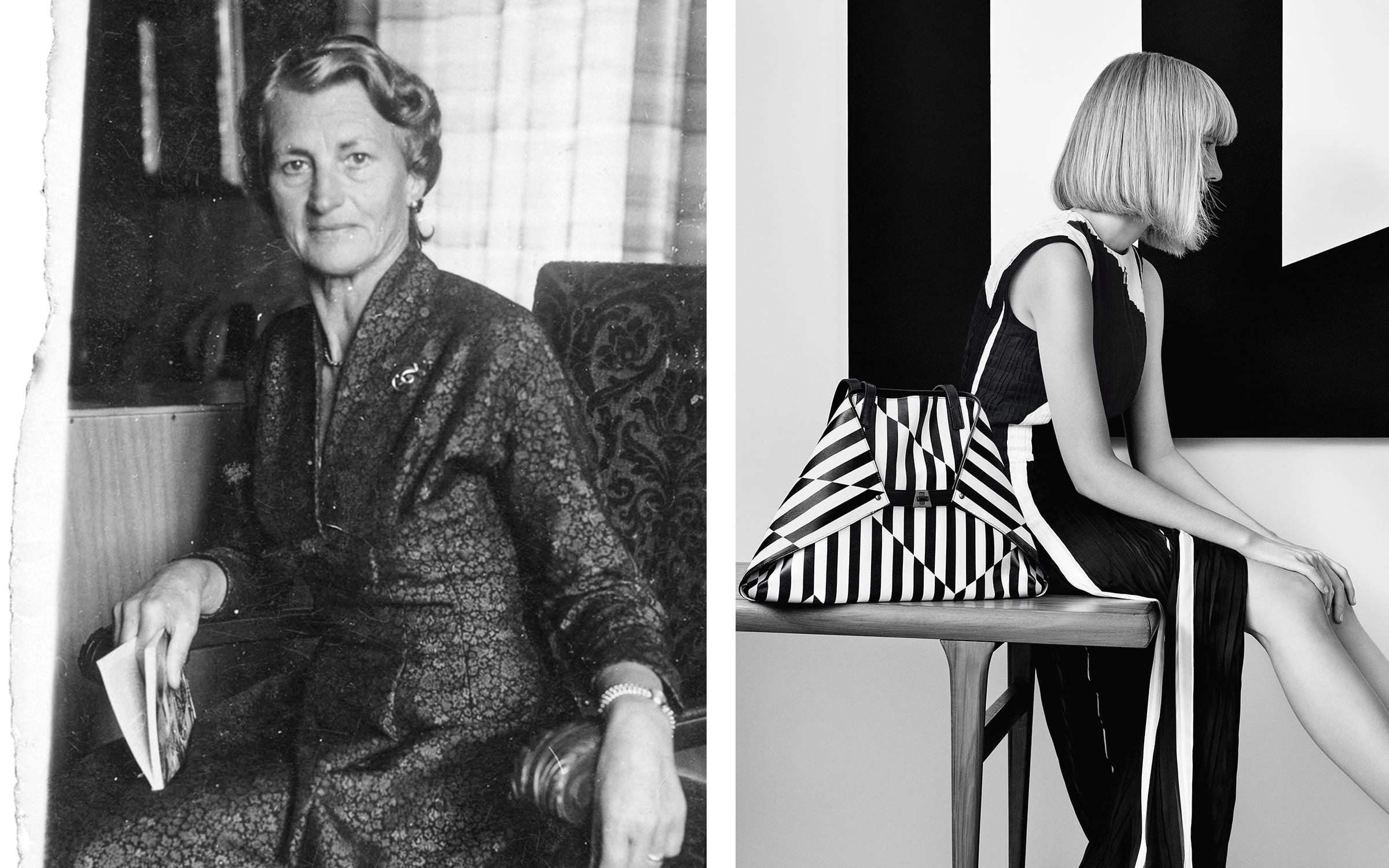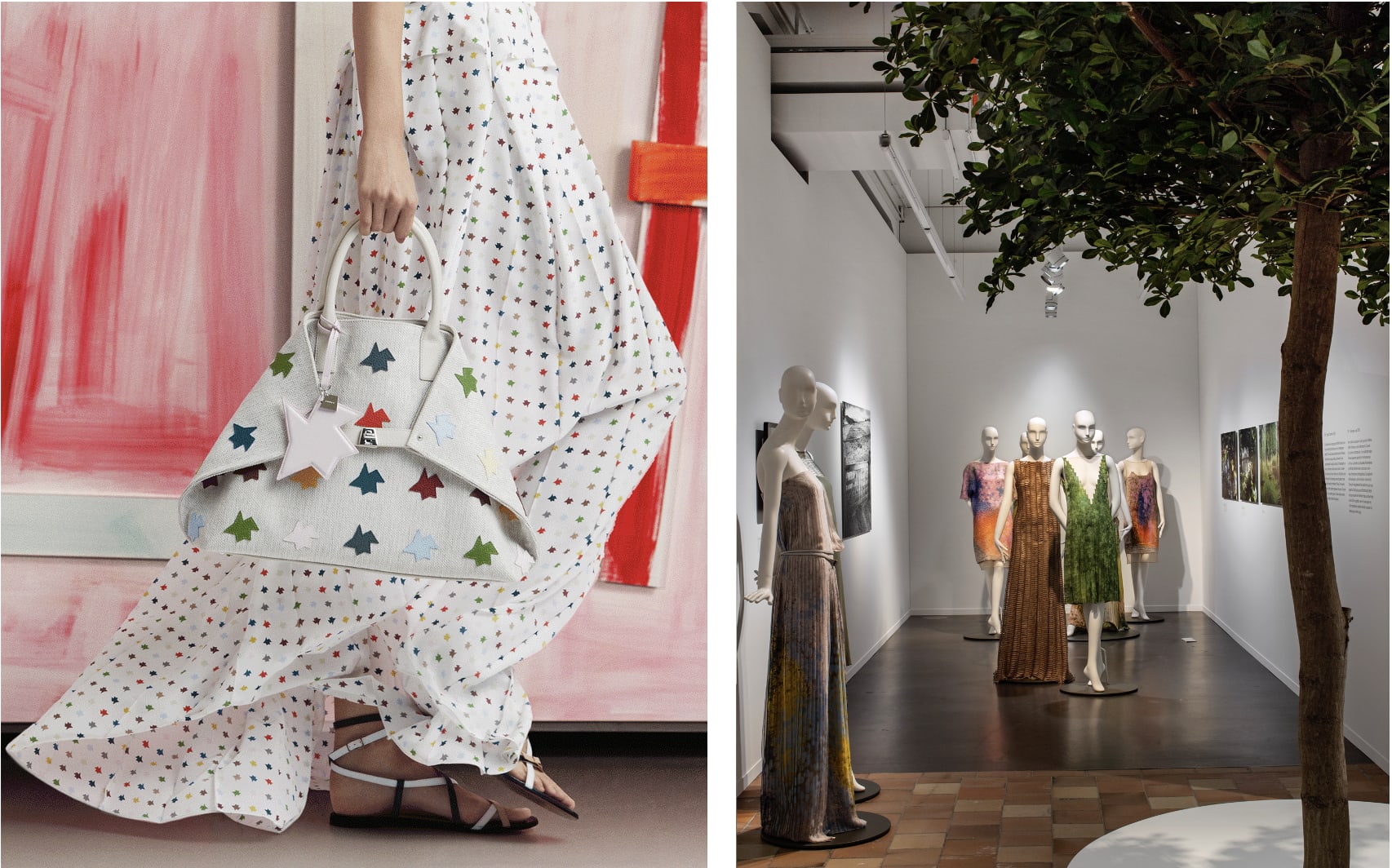 Left: Peter and Albert Kriemler at a Paris fashion show © Akris. Right: Akris, Albert Kriemler x Thomas Ruff, backstage shot, Fall/Winter 2014 © Akris.
Left: Peter and Albert Kriemler at a Paris fashion show © Akris. Right: Akris, Albert Kriemler x Thomas Ruff, backstage shot, Fall/Winter 2014 © Akris. Left: Portrait of Alice Kriemler-Schoch in her office © Akris. Right: Akris, Albert Kriemler x Carmen Herrera, advertising campaign, Spring/Summer 2017. Photograph by Amit Israeli © Akris.
Left: Portrait of Alice Kriemler-Schoch in her office © Akris. Right: Akris, Albert Kriemler x Carmen Herrera, advertising campaign, Spring/Summer 2017. Photograph by Amit Israeli © Akris. Left: Akris, Albert Kriemler x Imi Knoebel, multicolor Kinderstern, print, Ai medium messenger bag (foreground), Imi Knoebel, Ohayo, 1999 (background), Lookbook, Spring/Summer 2021. Photograph by Timothy Schaumburg © Akris. Right: Installation view of the exhibition ‘Akris. Fashion. selbstverständlich’, Museum für Gestaltung, Zürich, 2023. Photograph by Regula Bearth. © ZHdK
Left: Akris, Albert Kriemler x Imi Knoebel, multicolor Kinderstern, print, Ai medium messenger bag (foreground), Imi Knoebel, Ohayo, 1999 (background), Lookbook, Spring/Summer 2021. Photograph by Timothy Schaumburg © Akris. Right: Installation view of the exhibition ‘Akris. Fashion. selbstverständlich’, Museum für Gestaltung, Zürich, 2023. Photograph by Regula Bearth. © ZHdK Left: Akris, Albert Kriemler x Rodney Graham, Der Mantelanzieher, print on cashmere double face coat with knit sleeves (foreground), Rodney Graham, Der Mantelanzieher, 2015 (background), advertising campaign, Fall/Winter 2017. Photograph by Amit Israeli. © Akris. Right: Installation view of the exhibition ‘Akris. Fashion. selbstverständlich’, Museum für Gestaltung, Zürich, 2023. Photograph by Regula Bearth. © ZHdK
Left: Akris, Albert Kriemler x Rodney Graham, Der Mantelanzieher, print on cashmere double face coat with knit sleeves (foreground), Rodney Graham, Der Mantelanzieher, 2015 (background), advertising campaign, Fall/Winter 2017. Photograph by Amit Israeli. © Akris. Right: Installation view of the exhibition ‘Akris. Fashion. selbstverständlich’, Museum für Gestaltung, Zürich, 2023. Photograph by Regula Bearth. © ZHdK






